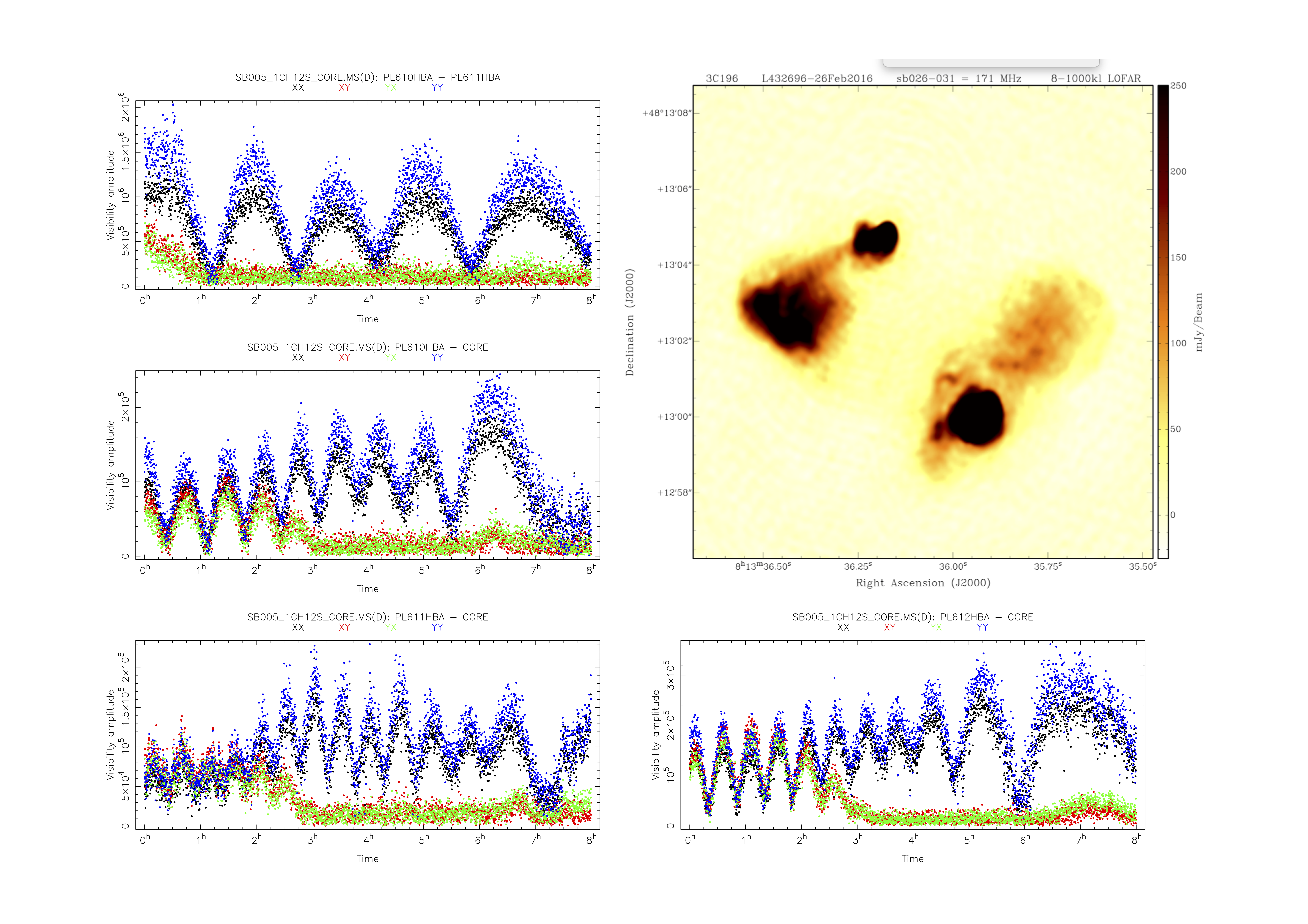Daily Image
14-06-20163C196 @171MHz at a resolution of 0.25 arcsec
| Submitter: | Ger de Bruyn |
| Description: | With the completion of three Polish stations, designated PL610, PL611 and PL612, in November 2015, the International LOFAR Telescope (ILT) has increased its maximum baseline to more than 1300 km. At a frequency of 173 MHz this allows it to make images with a resolution (PSF) of about 0.2"x0.3" . All that is required is a bright enough, compact radio source to (self-)calibrate the rapidly changing ionospheric phases. 3C196 is a double source with an overall extent of about 9"; it is associated with a quasar at a redshift of 0.87 which gives it a modes linear size of 70 kpc. On Dutch baselines, which span a maximum baseline of 120 km, we still see strong beating effects between the two dominant hotspots and it has proven difficult to remove the source perfectly from our EoR data using the four-component model created by Pandey (which is used by many LOFAR users to pre-calibrate their data). In order to get to a dynamic range in excess of one million we obviously need longer baselines to determine the structure at sub-arcsecond resolution ! Over the years, the EoR group has acquired many datasets with international baselines and a 116 MHz 0.50" PSF image of the source was shown last year at the Assen LOFAR conference. But we also needed such resolution for many other sources in our 10x10 agree deep images. So on 26 Feb 2016, just before 3C196 shifts into the daylight, we set out to use the multi-beaming capacity of LOFAR to target 20 compact sources, including 3C196, in an 8-hour experiment. Each target was allocated 4 groups of 6 subbands at respectively 116, 136, 155 and 171 MHz. Each subband had 32 channels and the correlator used 1s integration, in order to permit imaging over areas as large as the size of the international station beam (about 2 degrees). The 3 Polish stations worked flawlessly for 8 hours and we were lucky with a benign ionosphere. The other 9 international stations suffered about 1-2 hours of data-loss. The longer baselines and the higher frequency combined to double the resolution to about 0.25". Beautiful fringes were seen on the baselines from the LOFAR CORE (adding up all core stations) to the three Polish stations, as can be seen in the 4 plots. Since the Sun rises in Poland before it does over the Netherlands, the first few hours of data show strong differential Faraday rotation due to the different TEC over the two locations. This manifests itself as significant flux in the XY and YX cross-correlations (green and red). A high dynamic range image made from just 1 MHz of bandwidth at the highest frequency (171 MHz) is also shown. It reveals a wealth of structure; the NE hot spot is still not resolved. What makes the radio source somewhat special is that is is probably distorted by gravitational lensing due to a massive foreground barred spiral galaxy at a redshift of 0.43 entered. This galaxy is located about 2" South-East of the quasar core which is midway between the two hotspots. Transferring the self-calibratied complex gains, derived from the self-calibrated data to other beams, allows us to image compact sources up to 3 degrees away from 3C196, and with flux densities of only 0.1 Jy (in 1 MHz bandwidth). We expect to go much fainter, though. These results are shown today at the VLBI Busy week. |
| Copyright: | Ger de Bruyn |
| Tweet |  |
